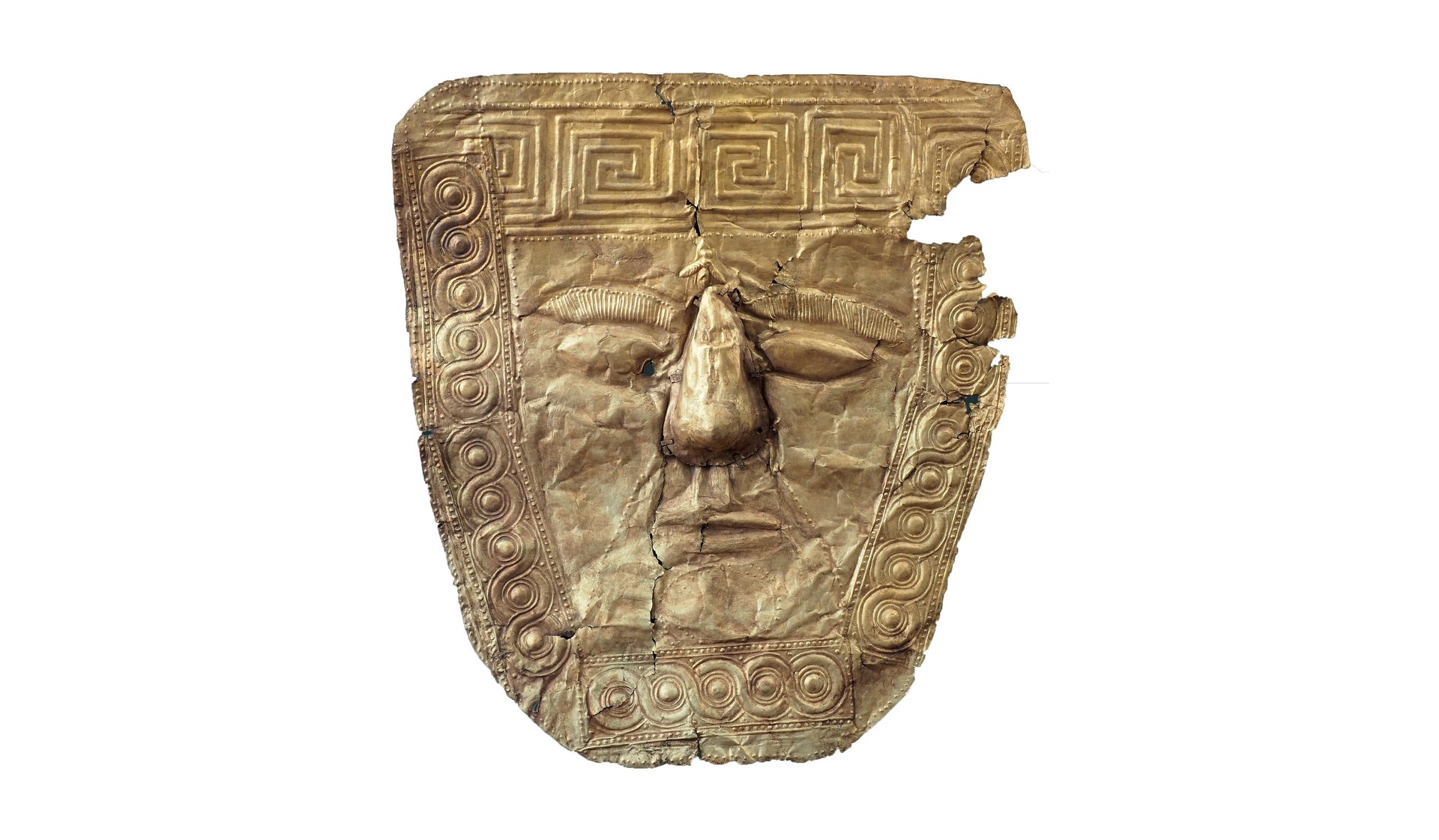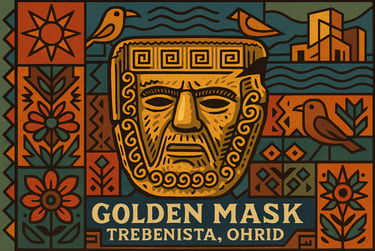
The Golden Mask of Trebenishte
Discovered near the village of Trebenishte, close to Ohrid, the Golden Mask is one of Macedonia’s most fascinating archaeological treasures. Dating back to the 6th century BC, the mask was found in an ancient royal tomb, part of a rich necropolis believed to belong to an elite warrior culture that lived in the region.
Made of finely crafted gold, the mask was used to cover the face of the deceased, symbolizing status, power, and a connection to the divine. Alongside it, archaeologists uncovered golden jewelry, richly decorated weapons, bronze vessels, and ceramic items—suggesting trade links with both the Greek world and the Thracians.
To date, seven golden masks have been discovered at Trebenishte, making it one of the most important burial sites in the Balkans. These finds offer a rare glimpse into the wealth, rituals, and craftsmanship of a forgotten people who once lived by the shores of Lake Ohrid.
You can see the original artifacts on display in museums in Skopje, Sofia, and Belgrade, each telling a piece of this ancient story.
The Trebenishte site was discovered by accident in 1918 during World War I by Bulgarian soldiers digging trenches.
The tombs also contained luxury items like imported Greek pottery, bronze helmets, iron swords, and gold jewelry.
A total of seven golden masks have been found so far, all from elite tombs dated to the 6th–5th century BC.
The golden masks are not all in one place—they’re now displayed in Skopje, Sofia, and Belgrade museums, due to historical circumstances after WWI.
The gold masks are made from a single thin sheet of gold, expertly shaped and engraved with human features.
The necropolis at Trebenishte had more than 50 tombs, most untouched by robbers—a rare archaeological jackpot.
Although often compared to Greek burial masks, the Trebenishte masks have unique local features, pointing to a distinct Illyrian or Paionian identity.
For the first time in over a century, all seven Trebenishte golden masks were reunited in one exhibition in 2019, during a special showcase at the Archaeological Museum in Skopje. It was the first time since their discovery in 1918 that the masks—normally kept in Skopje, Sofia, and Belgrade—were displayed together in one place, drawing huge interest from historians and tourists alike.


